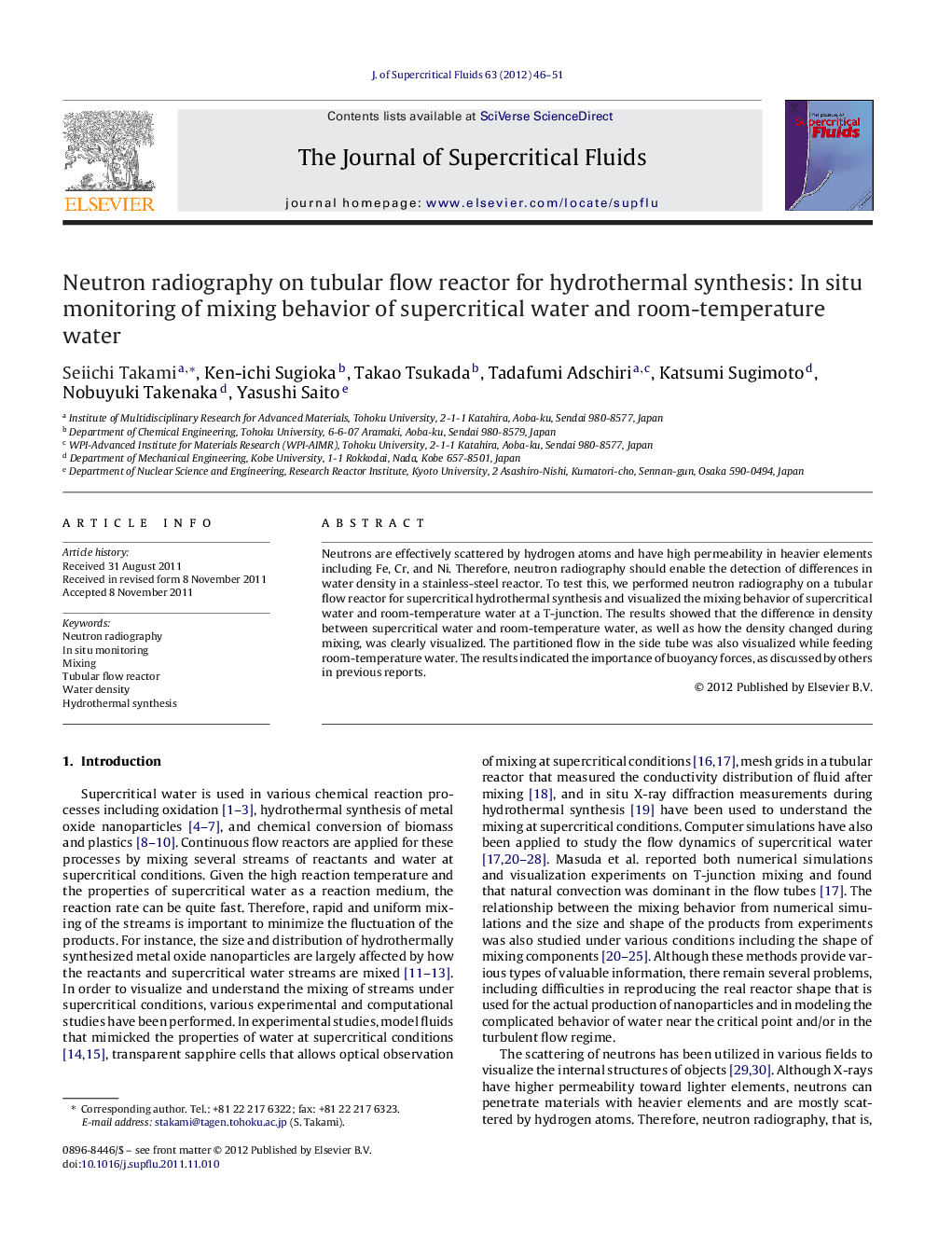| Article ID | Journal | Published Year | Pages | File Type |
|---|---|---|---|---|
| 231149 | The Journal of Supercritical Fluids | 2012 | 6 Pages |
Neutrons are effectively scattered by hydrogen atoms and have high permeability in heavier elements including Fe, Cr, and Ni. Therefore, neutron radiography should enable the detection of differences in water density in a stainless-steel reactor. To test this, we performed neutron radiography on a tubular flow reactor for supercritical hydrothermal synthesis and visualized the mixing behavior of supercritical water and room-temperature water at a T-junction. The results showed that the difference in density between supercritical water and room-temperature water, as well as how the density changed during mixing, was clearly visualized. The partitioned flow in the side tube was also visualized while feeding room-temperature water. The results indicated the importance of buoyancy forces, as discussed by others in previous reports.
Graphical abstractFigure optionsDownload full-size imageDownload as PowerPoint slideHighlights► Neutron radiography on a tubular flow reactor for supercritical hydrothermal synthesis was performed. ► Differences in the density of water in the tubes near the mixing point of supercritical water and room-temperature water can be clearly visualized. ► Neutron radiography is a powerful tool to analyze differences in water density and hence to understand the mixing behavior of supercritical water and cool water without the use of model cells.
